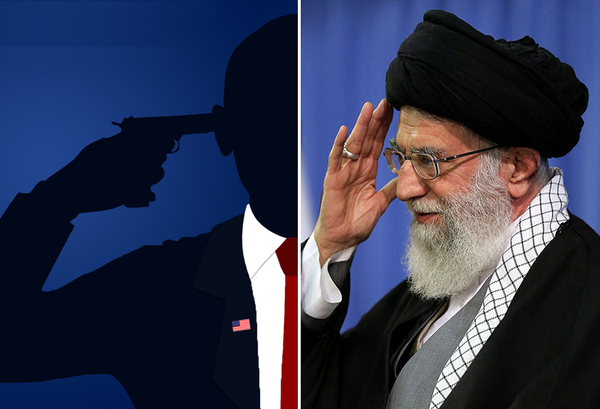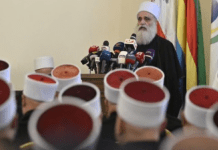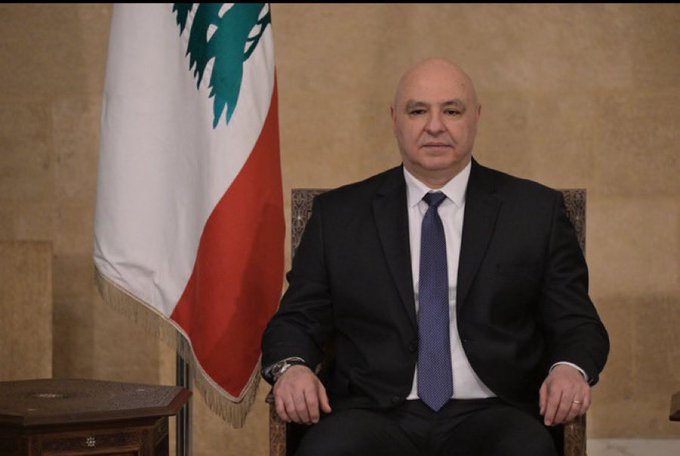And When We Are Faced with a Nuclear Iran?
Peter Huessy/Gatestone Iinstitute/August 5, 2015
Are we actually being told, then, that the only way to prevent Iran from having nuclear bombs is to let it have them? If not now, in 10-15 years? And with intercontinental ballistic missiles that can reach the U.S.? Even supporters of the deal say that yes, at the ten year mark, Iran will be able to breakout and build a weapon’s worth of nuclear fuel in a year or less — in other words, have nuclear bombs. Iran has never come clean with the IAEA — or anyone else — about its nuclear activities. These were discovered not by IAEA inspectors but by the U.S. and allied law enforcement and intelligence services, as well as by dissident groups within Iran. Are we actually assuming that Iran, under this new deal, will now come clean?
Thus under the July deal the U.S. may not (technically) know if Iran, after a breakout, has a nuclear weapon arsenal until Iran either tests a nuclear warhead or explodes it in an American or Israeli city. Then, of course, the discovery will be “too late” to do anything about, especially if the U.S. is helping Iran with technology assistance designed to prevent attacks on Iran’s nuclear sites.
Having made so many concessions to a non-nuclear Iran, how tough in the future will we be, faced with a nuclear Iran? Iran says its nuclear technology program is totally peaceful. In 31 other countries with peaceful nuclear programs, there are 438 nuclear power plants in operation, and in another 16 countries, 67 plants under construction. Under the terms of the 1969 Nuclear Non-Proliferation Treaty, any nation adopting nuclear energy has to comply with International Atomic Energy Agency (IAEA) rules. Every one of these nearly 50 countries does. Iran does not. For over two decades, in fact, Iran has flouted, bamboozled and cheated the IAEA. What, then, does this pattern of behavior bode for the emerging nuclear deal with Iran? Past activities by Iran related to prohibited nuclear weapons have included facilities where nuclear work was done, and the attempted smuggling of nuclear weapons technology, which was interdicted.
These activities, however, were discovered not by IAEA inspectors but by the U.S. and allied law enforcement and intelligence services, as well as by dissident groups, such as the Mujahideen-e Khalq (MEK), within Iran. We cannot necessarily count on such help in the future. Iran has never come clean with IAEA — or anyone else — about its nuclear activities — unlike the nearly 50 other nations that have, or are planning to have, nuclear energy. Are we actually assuming that Iran, under this new deal, will now do so? And if it does not, are we actually assuming that we will now have access to suspicious Iranian activity simply by demanding to inspect such sites?
We are being told that access to Iranian sites where cheating has been, or might be, taking place, will be “managed.”Iran will, of course, delay IAEA inspections to sanitize the suspected sites. It will also graciously allow China and Russia to help delay further inspections or enforcement action. And of course they can all graciously veto some UN Security Council action. After 24 days of forewarning and countless delay disputes, what will be left to inspect? No worry, say deal supporters. If Iran breaks the terms of the deal or is uncooperative, sanctions can be “snapped back” in place.Although Moscow insisted that there will be no automatic re-imposition of sanctions, what Russia and Iran eventually got in the final agreement was nearly as good. All deals made prior to sanctions being re-imposed will not be affected, a limitation that seriously weakens the effect of the snapback provision.
Deal supporters then optimistically point to Iran’s pledge not to build certain new nuclear facilities. But these are facilities Iran had no intention of building in the first place. Supporters of the deal also tell us that that number of Iranian centrifuges will be sharply reduced. But, we are also told, these centrifuges will not be destroyed (Iran refuses to do); they will be stored. Of course, stored centrifuges can always be un-stored — and then reconnected to enrich uranium. “Don’t worry,” the deal’s supporters say. Some of the enriched uranium gas Iran has already produced, from which bombs could be made, will be changed into a solid form, which is not suitable for further enrichment. Except they apparently “forgot” that it takes only two weeks to turn the enriched solid material back into gas suitable for further nuclear enrichment. The deal’s supporters say that Americans overwhelmingly want a diplomatic outcome to the Iranian nuclear threat and not “another war” — and, well, a “deal” is a “diplomatic outcome,” isn’t it? But does this diplomatic deal deny nuclear weapons capability to Iran, as the negotiators said they set out to accomplish? No.
Is Iran’s nuclear breakout time even extended? According to Public Affairs expert Alan J. Kuperman, it remains at three to four months at most. Is the deal verifiable? Proliferation expert Ambassador Robert Joseph says no. Will advanced research on centrifuges by Iran stop? The deal explicitly says that advanced research is allowed. Won’t Iran just take the money unfrozen by the deal — reportedly upwards of $150 billion — and use it for terrorism and building more missiles? Not really, say deal supporters; Iran is already funding terrorism and missile production. Oh, then the mullahs must be planning to use the new $150 billion for hospice care and battered women’s shelters.Finally, at the end of the deal, presumably in ten years or so, will Iran have, or not have, the capability to build a nuclear weapon?
Even supporters of the deal say that yes, at the ten year mark, Iran will be able to breakout and build a weapon’s worth of nuclear fuel within a year or less — in other words, have nuclear bombs. Are we actually being told, then, that the only way to prevent Iran from having nuclear bombs is to let it have them? If not now, in 10-15 years? And with intercontinental ballistic missiles that can reach the U.S.? But, the deal’s advocates argue, the IAEA will be able detect such activity, and besides, the nature of the regime will have changed. They do not specify if this change will be for the better or for the worse. It is important to remember Israel’s long-standing and repeated warnings that Iran was close to one year away from having a nuclear weapons capability. Now, even with a deal, Iran may be as close as three months away — just in time to negotiate still further arrangements until it can run out the clock.
How long will it be, then, before we find out Iran is cheating? And then take action? Here is some history that might give some clues:
Chemical weapons are still being used by the Assad government in Syria — although there is a US-Russia deal from September 2013 that says no such activity is allowed.
When did we find out the North Koreans had an illegal enrichment facility? When the North Koreans invited US officials to see the facility — not to get rid of it but to boast that they were going to keep it.
North Korea’s cheating, which led up to the revelation of an enrichment capability, happened during the Clinton administration — which had agreed, along with its 1994-5 Agreed Framework partners, to build two nuclear reactors for North Korea and provide billions in energy and food assistance. Similarly, there indeed may be a diplomatic purpose to the administration’s serial concessions to Iran. The administration may believe they all were necessary — an “outstretched hand” — to get the Iranians to think kindly of us and “unclench its fist.” What other decisions may have been made to please Iran? Iran’s Foreign Minister and chief nuclear negotiator, Javad Zarif (left), is very, very pleased with the recent nuclear deal. Iran’s Supreme Leader, Ayatollah Ali Khamenei (right), is not unclenching Iran’s fist in its relations with the West.
Were the chemical redlines in Syria, for example, not enforced for fear of upsetting Iran?
Did the Obama administration not support Iranian people’s attempted “Green Revolution” in 2009-10 in order not to upset the mullahs? Did the U.S. refuse to provide weapons to the Kurds in Iraq, with which to confront ISIS, because we did not want to upset the Iranian mullahs, whose agents control much of the Iraqi government? Did the U.S. apologize for the supposed role of the U.S. in a 1953 Iranian coup — which never in fact occurred, as the Shah had the constitutional power to dismiss the prime minister — again not to upset the mullahs? Did the U.S. allow India, Japan, Korea and China all to receive sanctions exemptions and import Iranian oil because it did not want to upset the mullahs? It looks suspiciously as if we made all these concessions to grease the diplomatic skids to get a deal. Those represented our “outstretched hand.”
But did these concessions succeed in preventing Iran from continuing to build its nuclear weapons capability? Not for a minute. Thus, under the July deal the U.S. may not (technically) know (although it would definitely be suspicious) if Iran, after a breakout, has a nuclear weapons arsenal, however small, until Iran either tests a nuclear warhead or explodes it in an American or Israeli city. Then, of course, the discovery will be “too late” to do anything about, especially if the U.S. is helping Iran with technology assistance designed to prevent attacks on Iran’s nuclear sites (from terrorists, of course!). Having made so many concessions to a non-nuclear Iran, how tough in the future will we be, faced with a nuclear Iran?
http://www.gatestoneinstitute.org/6296/nuclear-iran






















